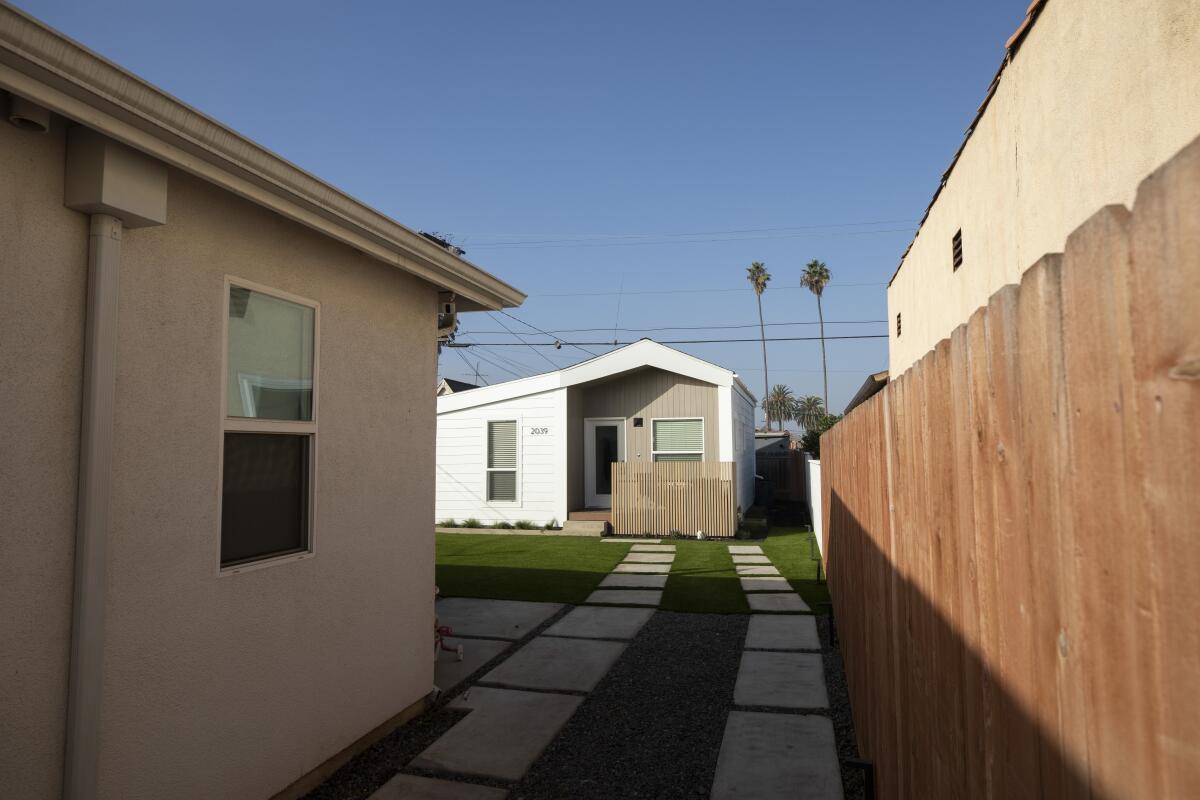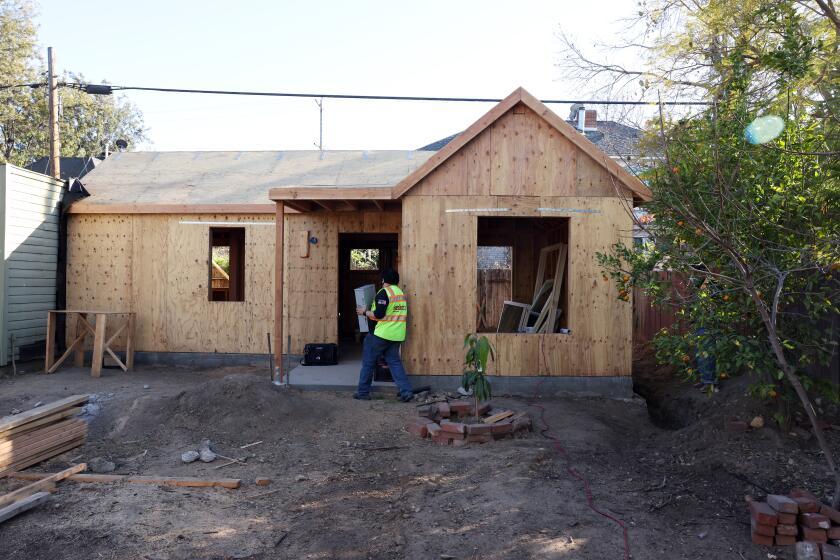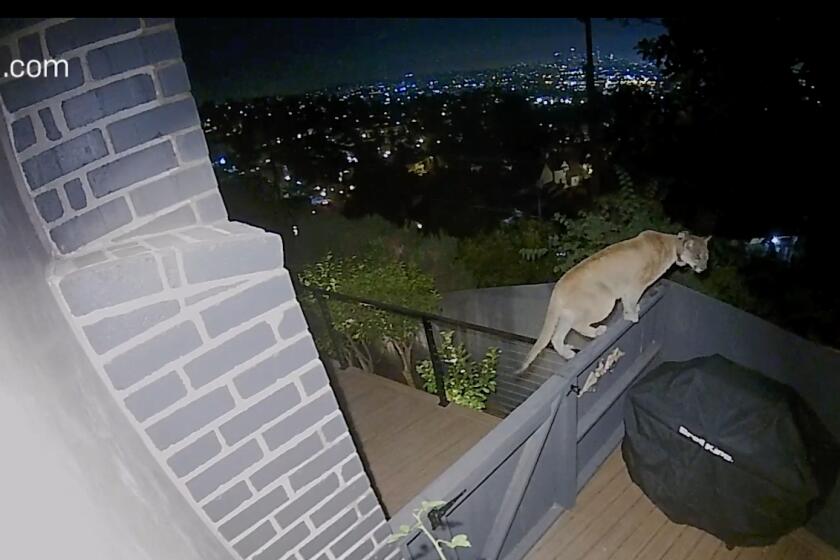Patience, please. Undoing damage from decades of anti-housing policy in California won’t happen overnight

- Share via
It’s been more than a year since California got rid of most single-family zoning — yet the radical change in policy has been decidedly unradical in practice. A new study found that Senate Bill 9, which allows up to four units on a single-family lot, has barely been used.
That’s not a surprise, despite the angst that preceded the law’s passage in 2021. Some homeowner groups and local elected officials vehemently opposed SB 9 and warned it would destroy single-family neighborhoods. But the law is more likely to gradually change communities by adding a little density and a few more homes over years, not months.
California can’t afford to have housing production move too gradually, though. The state desperately needs new homes built to ease the housing and homelessness crises, so it’s worth examining why more property owners haven’t embraced SB 9. The law permits a landowner to build a duplex on a single-family lot, or subdivide the property into two lots that can each accommodate two units, which could be sold separately.
Two fairly modest proposals to allow greater housing density are under debate in Sacramento. They shouldn’t be controversial, and yet they are.
The study from UC Berkeley’s Terner Center for Housing Innovation evaluated 13 cities where property owners seemed most likely to take advantage of SB 9 because of healthy real estate prices and a lot of backyard home construction. But in those cities, a total of 282 applications for SB 9 homes were submitted and only 53 approved.
For comparison, California cities permitted nearly 20,000 backyard homes, or accessory dwelling units, in 2021, according to state data. (2022 numbers are not yet available, though they are expected to be similar or higher.)
Los Angeles, which was one of the 13 cities analyzed, had the bulk of the SB 9 activity, with 211 applications for homes submitted and 38 approved through November. That is dwarfed by the 5,000 ADU permits approved by the city in 2021.
Why are ADUs booming but not SB 9 duplexes? They’re similar housing types in similar communities, but it’s easier to build an ADU now thanks to multiple state laws passed since 2016 that overruled local requirements for parking, setbacks and other criteria that made it difficult and expensive to build backyard homes. After SB 9 passed, some cities layered on the requirements — in some cases, to discourage duplexes. (Not Los Angeles, which is one reason the city had so many applications.) If lawmakers want to see more duplexes for sale or lease in single-family neighborhoods, they’ll have to pass more laws streamlining the process and overriding local regulations that make it unnecessarily expensive and complicated to build.
Good for California Atty. Gen. Rob Bonta for calling out Woodside officials on their shameless ploy to declare the entire town mountain lion habitat.
The slow progress so far doesn’t mean the law has failed. SB 9 was never going to be a magical solution to California’s housing crisis. It was (and is) an important step to lift restrictive zoning laws that have made it too hard to build enough homes to keep up with population growth.
Two-thirds of residential land in California had been restricted to single-family homes and had been off-limits to the development of backyard houses, duplexes and fourplexes that would be more affordable to middle-income and low-income renters and buyers. ADU laws and SB 9 removed those restrictions, opening up neighborhoods to more housing opportunities.
California’s housing shortage was created over decades. Reforming the housing laws that fueled the crisis will take time as well. It’s an essential culture shift for the future of the state that is not going to happen in just a year. Give SB 9 time to work.
More to Read
A cure for the common opinion
Get thought-provoking perspectives with our weekly newsletter.
You may occasionally receive promotional content from the Los Angeles Times.











